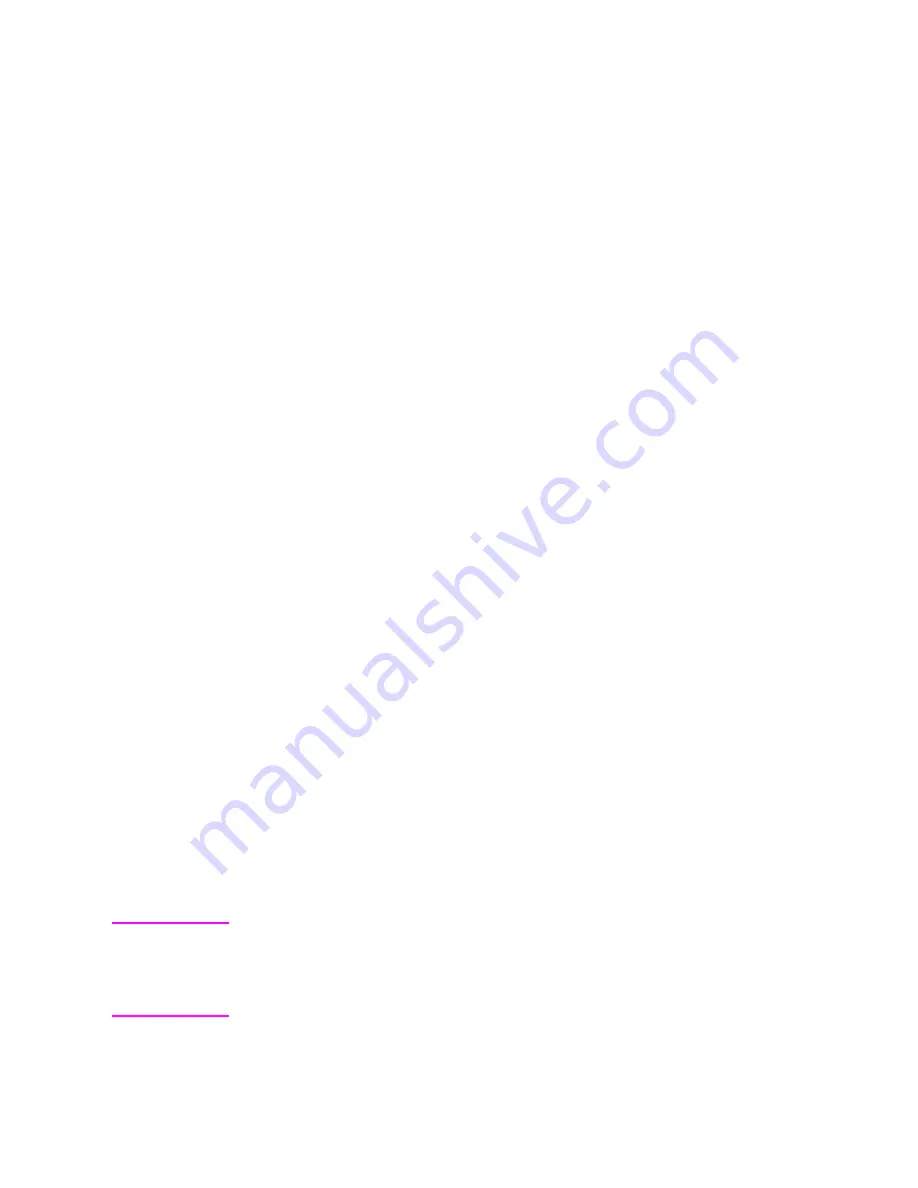
EN
Introduction 3-1
3
The Print
Environment
Introduction
The group of all of the printer’s current feature settings,
collectively, is referred to as the print environment. The printer
maintains four print environments: the Factory Default
Environment, the User Default Environment, the Modified
Print Environment and the Overlay Environment. This chapter
describes the Factory Default Environment, the User Default
Environment, and the Modified Print Environment (the Overlay
Environment is described in Chapter 12, Macros).
Default settings refer to the settings programmed into the printer
at the factory or settings selected using the control panel. The
term “default” simply refers to the settings the printer uses unless
printer commands select other settings.
Each time a job is printed, some of the printer’s feature settings
may be changed from their default values to produce the desired
printed output for that job. After the job prints, the job-specific
feature settings are longer be required, since the next job is likely
to have different output requirements. The next job should clear
all previous job settings by performing a reset. This allows a job
to start with the default settings as a known base set, and vary
only those settings that are needed. Starting with the default
environment at the beginning of each print job eliminates the
need to set every feature each time a job is run.
Note
The print environment features presented in this chapter are for a
variety of HP LaserJet printers. Not all of the features are applicable
to every printer. To identify variations and default settings for specific
printers, refer to Chapter 3 of the PCL 5 Comparison Guide.
Summary of Contents for LaserJet 4100
Page 1: ...Part I Click here to access Part II on hp com ...
Page 2: ......
Page 26: ...Contents 14 EN ...
Page 44: ...2 10 The Page EN ...
Page 54: ...3 10 The Print Environment EN ...
Page 70: ...4 16 PCL Job Control Commands EN ...
Page 80: ...5 10 Page Control Commands EN Figure 5 3 Changing Print Direction on a Page ...
Page 82: ...5 12 Page Control Commands EN Figure 5 4 Text Area Within the Page ...
Page 110: ...6 16 Cursor Positioning EN ...
Page 120: ...7 10 Fonts EN Figure 7 11 Bitmap Character Figure 7 12 Scalable Character ...
Page 122: ...7 12 Fonts EN ...
Page 152: ...8 30 PCL Font Selection EN ...
Page 166: ...9 14 Font Management EN ...
Page 182: ...10 16 User Defined Symbol Sets EN ...
Page 237: ...EN Character Descriptor Formats 11 55 Figure 11 5 Class 2 Character Data ...
Page 240: ...11 58 Soft Font Creation EN Figure 11 6 Portrait Character Example ...
Page 241: ...EN Character Descriptor Formats 11 59 Figure 11 7 Landscape Character Example ...
Page 270: ...13 4 The PCL Print Model EN Figure 13 3 Effect of Transparency Modes on Images ...
Page 276: ...13 10 The PCL Print Model EN Figure 13 4 Shading Patterns ...
Page 277: ...EN Pattern ID Area Fill ID Command 13 11 Figure 13 5 Cross Hatch Patterns ...
Page 290: ...13 24 The PCL Print Model EN ...
Page 297: ...EN Pattern ID Area Fill ID Command 14 7 Figure 14 1 Shading Patterns ...
Page 298: ...14 8 PCL Rectangular Area Fill Graphics EN Figure 14 2 Cross hatch Patterns ...
Page 341: ...EN Raster Graphics Example 15 33 Figure 15 11Example of Raster Graphic Image Data ...
Page 342: ...15 34 Raster Graphics EN ...
Page 370: ...16 28 Status Readback EN ...






























